Making incense is fun and easy. It does, however, require a sacrificial grinder (so be forewarned)!
Whenever I make my incense I find myself pondering how the ingredients would be worth their weight in gold two thousand years ago. When the “three wise men” in the bible allegedly brought jesus frankincense and myrrh, they were bringing him valuable bling. Nowadays, I suspect it’d be an iPhone, bluetooth headphones with Swarovski crystals on them, Louboutins,* Louis Vuitton luggage, and a Lamborghini.

Spices in the market in Doha, Qatar (Marcus Ranum photo, 2012)
When I was in Jeddah in 2013 I went to a couple of old-school incense stores and they were simply amazing. And, the prices were so crazy I didn’t get anything – I think mostly it was the beautiful packaging: boxes of intricately carved wood, inlay, porcelain and gold, sandalwood and brass. Very exotic.
I know the picture of the spices is irrelevant, but – it smelled better than some of the incense I’ve smelled. Black pepper and coriander, curry and cumin, nutmeg! I wound up standing by the store for a while, snorting like Donald Trump in a debate.
The primary ingredients in incense are:
a) a resin/resins
b) something that burns it
That’s pretty much it. The worst incense you can buy is charcoal, glue, and cow poop, which – seriously – is sometimes what they sell in the cheapest head-shops. I guess burning that stuff makes sense if you’re trying to mask another odor. Some cheap incense is made with sawdust that has been soaked in sodium or potassium nitrate (saltpeter) and allowed to dry, then ground up with glue and a resin or artificial scent. Do not go on ebay and buy an “incense-making kit” because mostly they sell the sawdust/saltpeter stuff, pre-formed onto bamboo sticks, and your choice of “scent oil” which is almost certainly mineral oil, polysorbate 20, and some horrible chemical that smells like fake bananas or whatever.
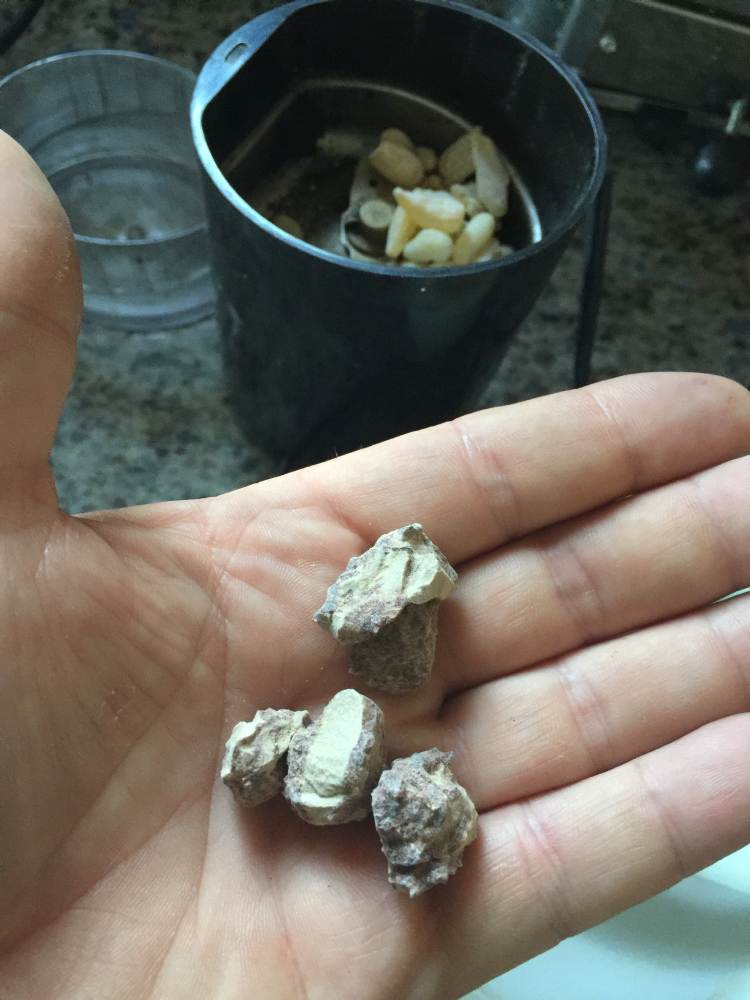
benzoin resin about to go in the whizzer. frankincense is in the whizzer already.
I use a mixture that consists of: benzoin resin, frankincense, tonka beans, sandalwood, and black pepper corns. The black pepper corns are very subtle; I mostly add them because I find it amusing that I can get a pound of black pepper corns on ebay for $11 whereas in Roman times that bag would buy me a nice villa and servants. You can see (center left) my grinder is already loaded with some frankincense tears, also obtained by the pound on ebay. You can get Gum Sandarac (sandalwood sap tears) on ebay, too, if you prefer a woodier scent. Benzoin (Styrax) has the texture of gravel and will beat the crap out of your blender. I use a little Braun electric blender that is special for the purpose: if you mix this kind of smelly stuff in a blender, it will smell great forever but you will not be able to use it for anything else.
One option at this point is not to use resins, and to stick with essential oils and concretes.** Or a combination of the two. I’ve done incenses where I add a couple drops of labdanum concrete to my resins, but the main resin is frankincense. You need to think about how whatever you’re going to use will burn. Easy ways to solve this is to stick with things that are commonly used in incense, because other people have tested it for you. Another option is to take a bit of whatever and hold it over a match and see if it makes the flame bigger (more flammable) or not. If you use a lighter, remember: incense burns at low temperature and lighters are ~1500 degrees F. You want stuff that burns well at 400 degrees F.
So, for example, you might find that you can buy a pound of pressed*** vanilla beans on ebay for $19, and want to make vanilla incense: test by holding a piece to a match and you’ll discover it doesn’t smell very good, and doesn’t burn very well. Forget that one. Experiment! Just remember that most commercial incense you buy is using scent oils that are largely artificial scents carried in paraffin oil, they’ll burn just great.
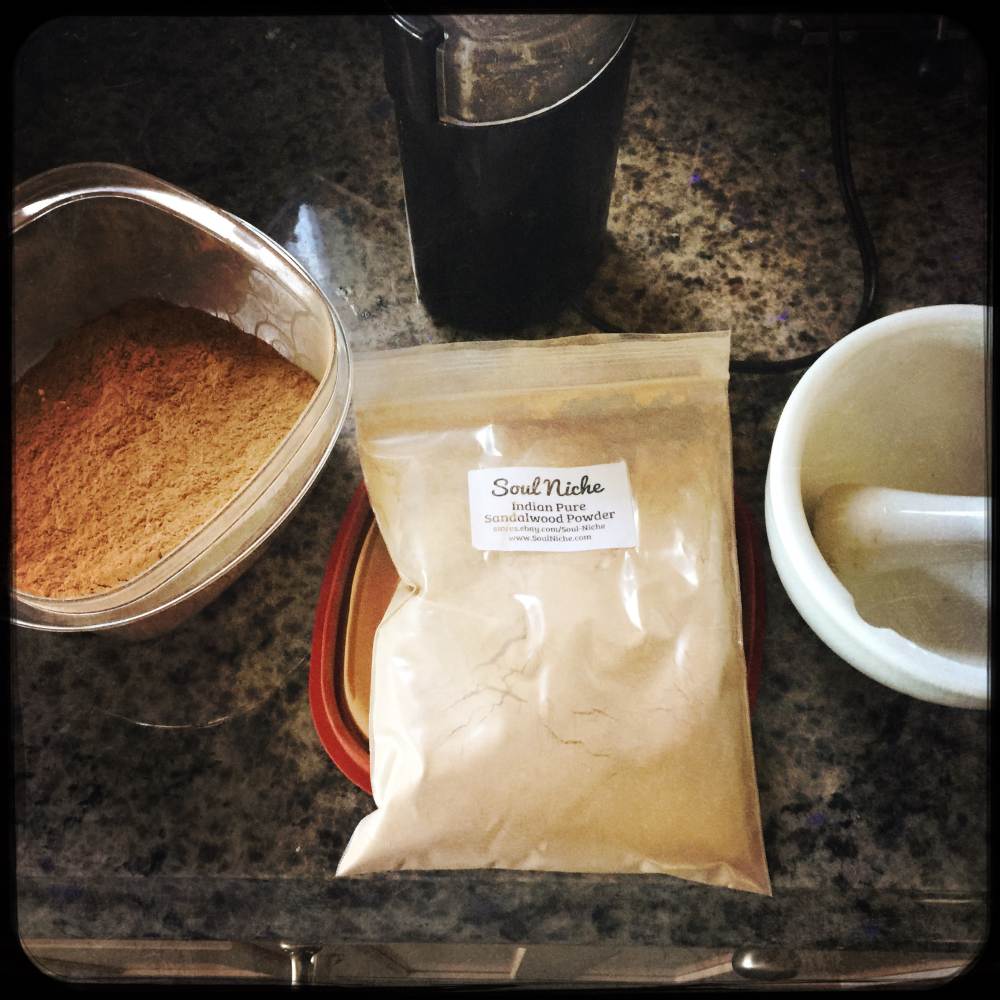
sandalwood powder and makko (left) powder
The other thing you need is this stuff called “Makko” which is powdered pinetree of a certain sort that’s fairly sticky when wet, and gluey when dry. Your makko does two things: it holds your incense together, and it smoulders well. If you use something other than makko, you’ll be using sandalwood or sawdust and you’ll need saltpeter to make it burn completely. If you’re using something that won’t burn very well you can buy a couple blocks of unscented charcoal for burning shisha in a hookah, and grind some of that up in with your resins.
I get my makko on ebay by the pound. A pound is about $20 and it makes a whole lot of incense. You can also sometimes find it on amazon.com. Keep your makko dry – I store mine in a tupperware container, with a couple of those dehydrator silica gel packs thrown in for good measure.
I usually use 3/4 makko and 1/4 everything else, and I favor having most of my resins dry, not concretes or essential oils. The dry resins give a bigger bass note to the scent and have less of a punchy, over-strong essential oil feeling. Essential oils are very powerful and can easily dominate your incense when it burns.
So, roughly a cup of makko to 1/4 cup of other stuff.
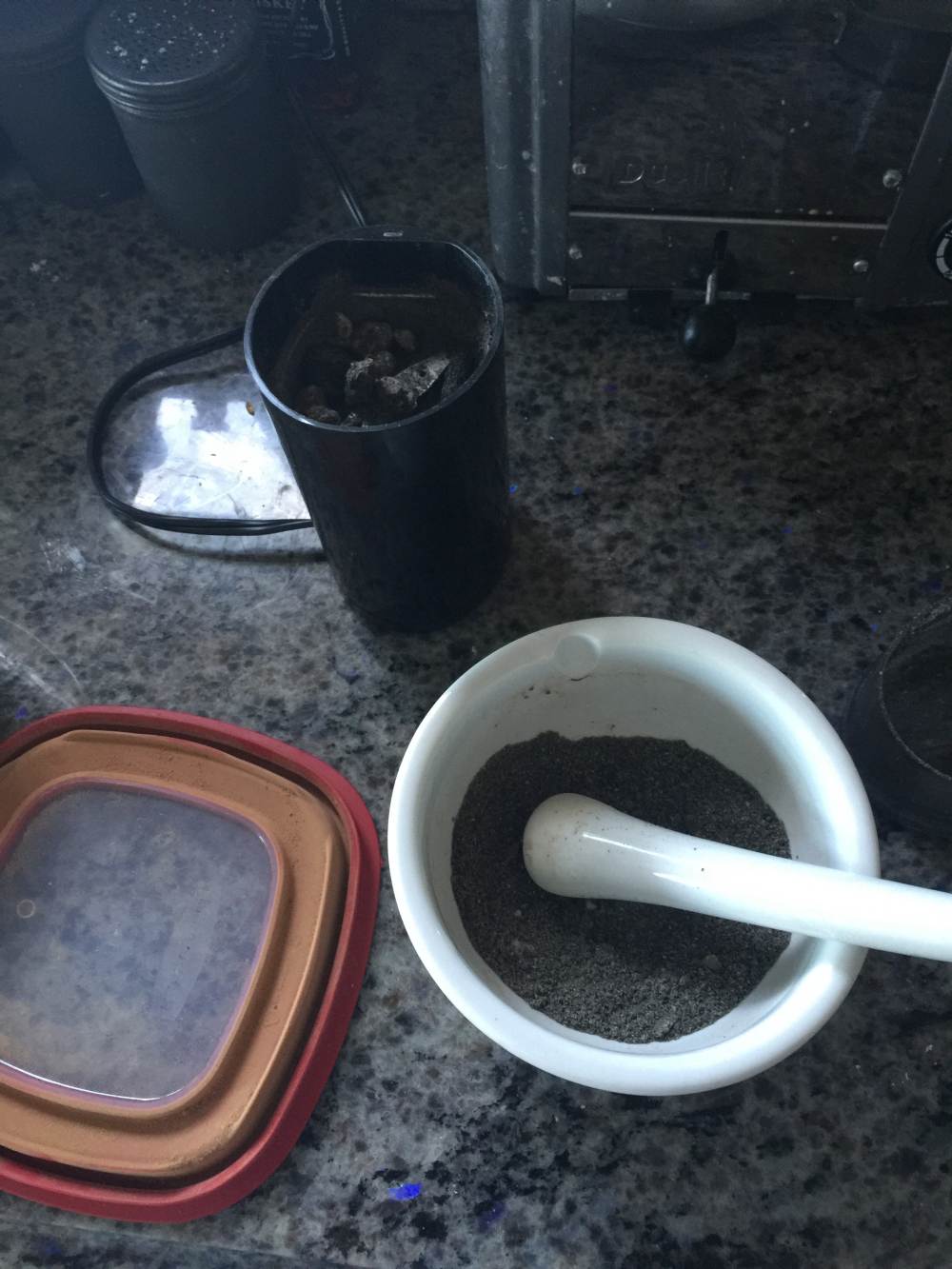
resins, all whizzed and delumped
Just to give you an example of a favorite mix:
- 2 heaping tablespoons of sandalwood
- 1 heaping tablespoon of frankincense
- 5 or 6 tonka beans
- 1 teaspoon of black pepper corns
- 1 heaping tablespoon of benzoin
- about twice as much makko powder as all the other ingredients
I usually grind my resins and spoon them into my mortar and fish out any chunks and re-grind them until the whole batch is pretty fine. You’ll notice that this batch is pretty much black: that’s because I added some charcoal and there’s some black pepper in it.
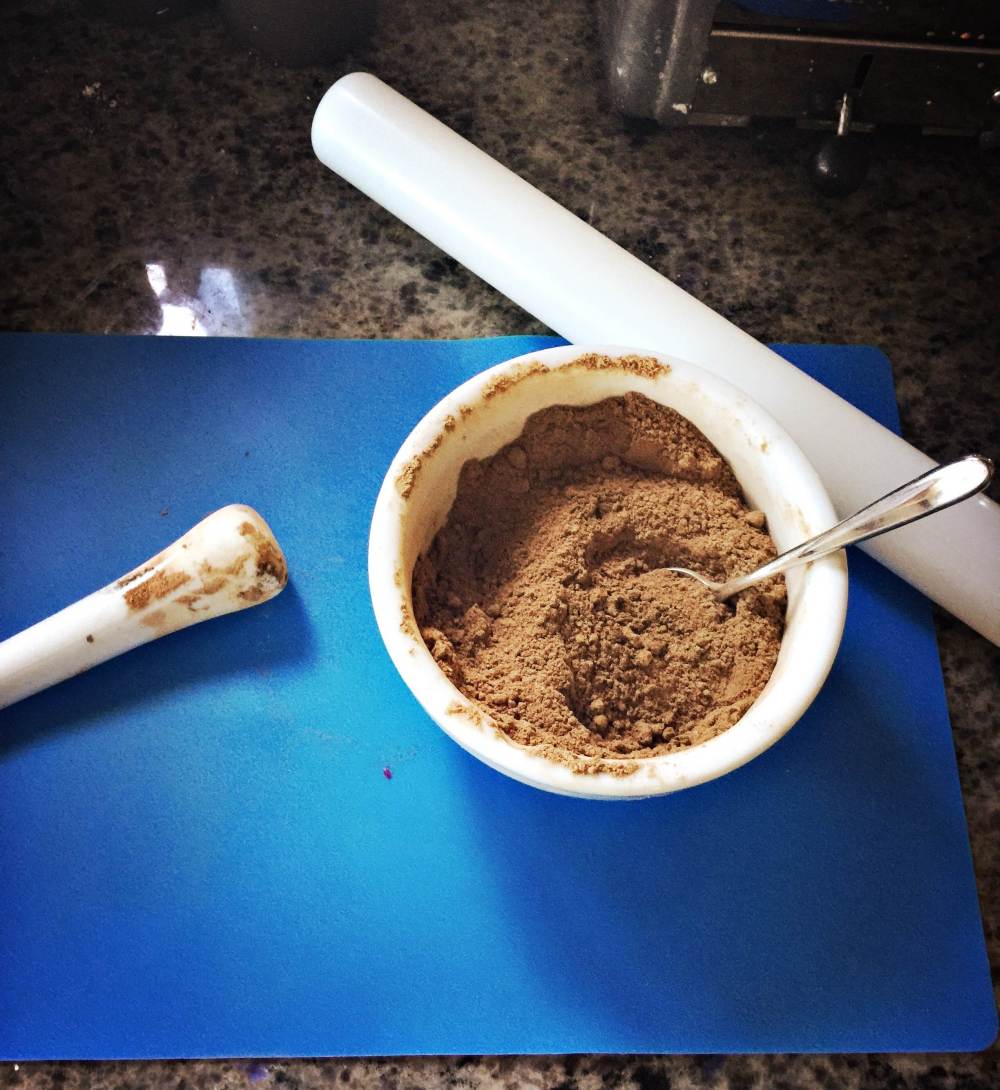
makko and resin mixed
When your materials are fine, dry mix them then start adding water. Slowly. I usually add it a tablespoon at a time and mash it in with a spoon or the pestle. If you get your material too wet, just add more makko. But try to be careful adding water – it goes from “dry mix” suddenly to “dough.” You want the “dough” consistency.
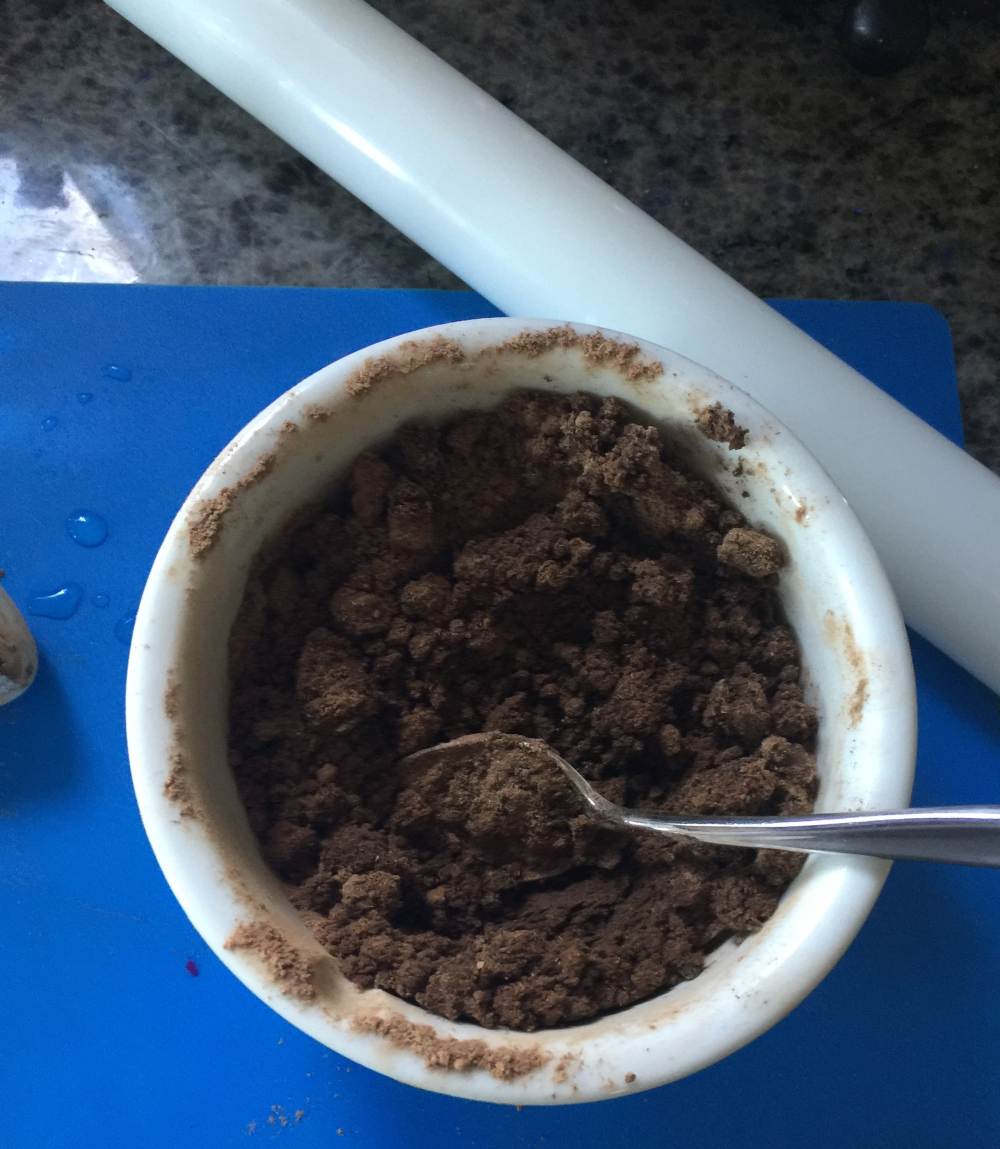
adding water toward dough
Here it’s about 3/4 of the way to dough. Another couple tablespoons of water and it’ll be ready to go.
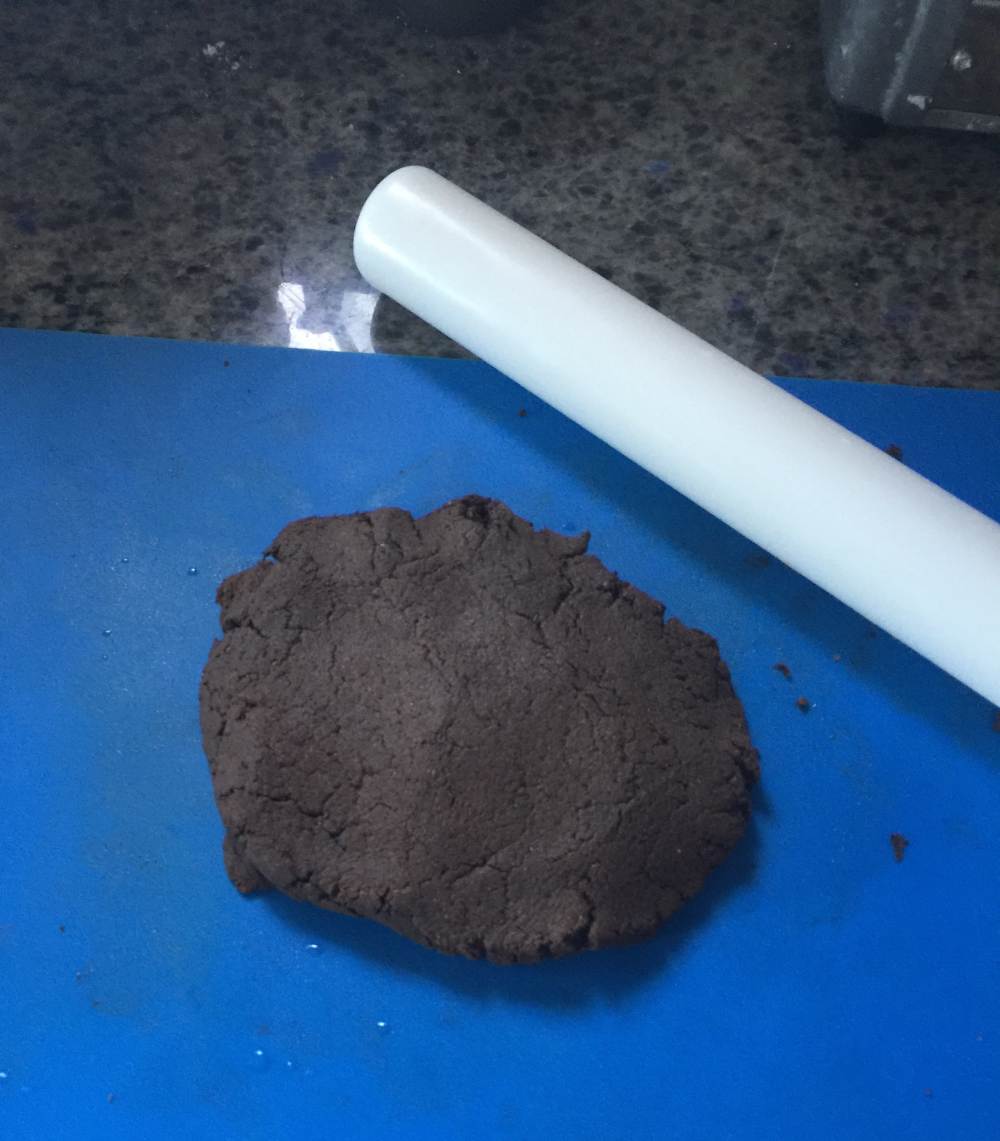
incense dough
Once it’s dough, you can (and should) knead it a bit to make sure that it’s workable. It needs to be not too stiff, not to gooey. If it falls apart when you handle it, you’ll need a teeny bit more water. If it’s sticking to your hands, add a teeny bit more makko. The dough above is as close to perfect as I know how to get it.
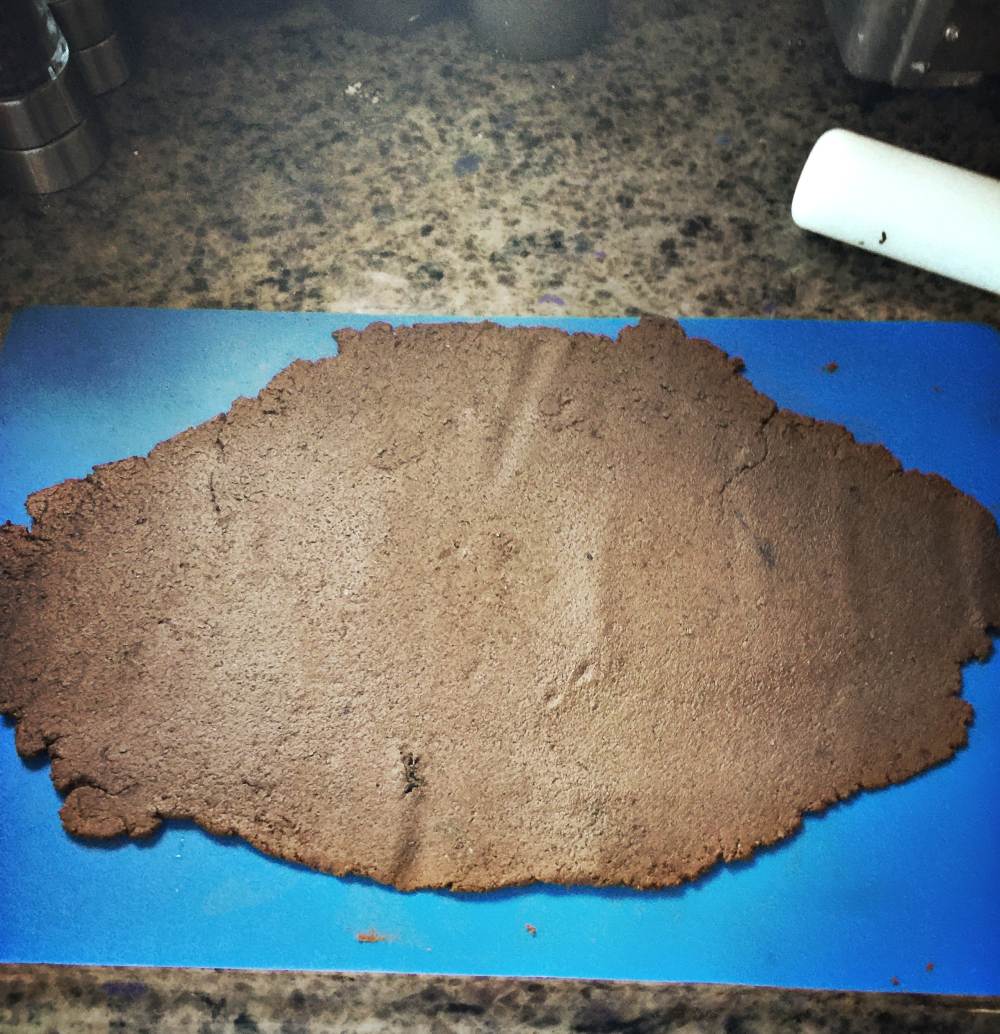
rolled out dough
I usually roll the dough out on a silicone baking pad, then fish any chunks (see that hole in the lower center?) that don’t roll, out. Then I fold it and roll it down again. Take a knife and trim the rolled-out dough into a roughly rectangular shape. I set the trimmings aside and either do another roll on another sheet, or I make cones with the trimmings.
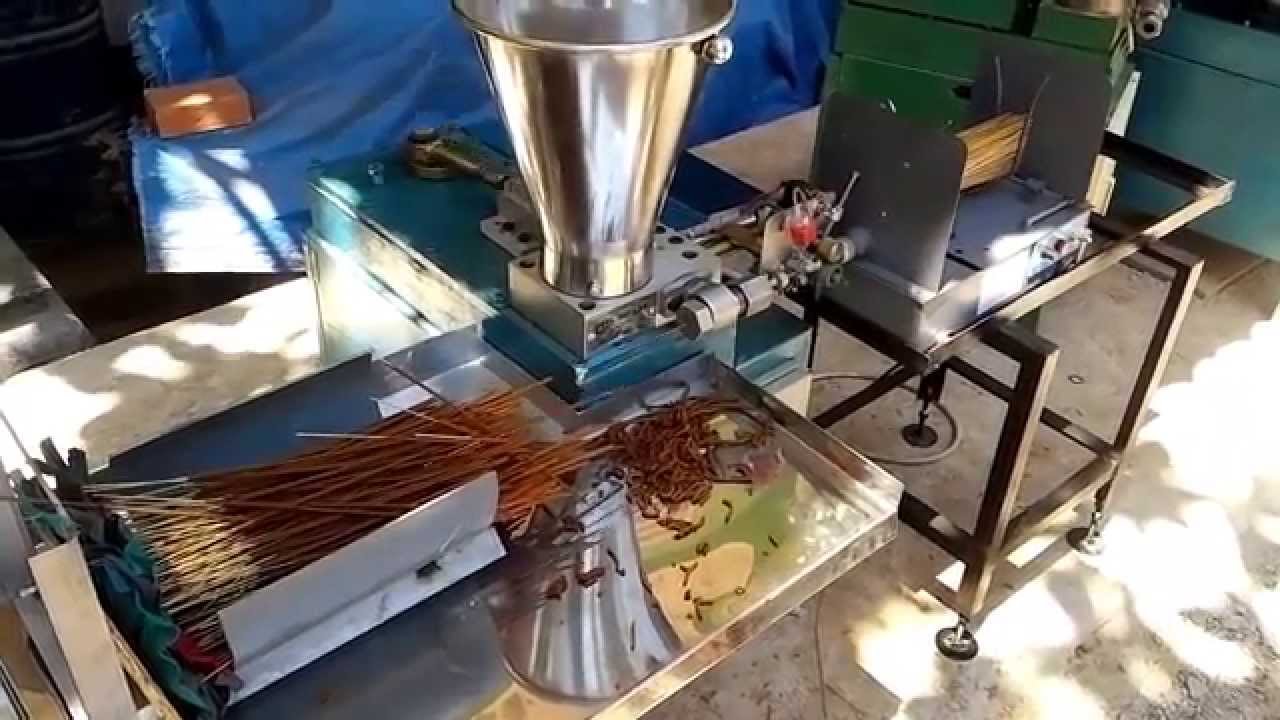
incense rolling machine
Many people roll their incense on bamboo sticks, at this point. The Japanese use a hydraulic press to extrude it into thin sticks.
Rolling it onto sticks is either not a skill I have, or it’s accomplished with the use of glue. I have tried several times and I just can’t get it to work. I believe the machines use enough pressure that the incense has all the water squished out while it’s being pressed onto the stick. Whatever. I like my shape of incense better, anyway!
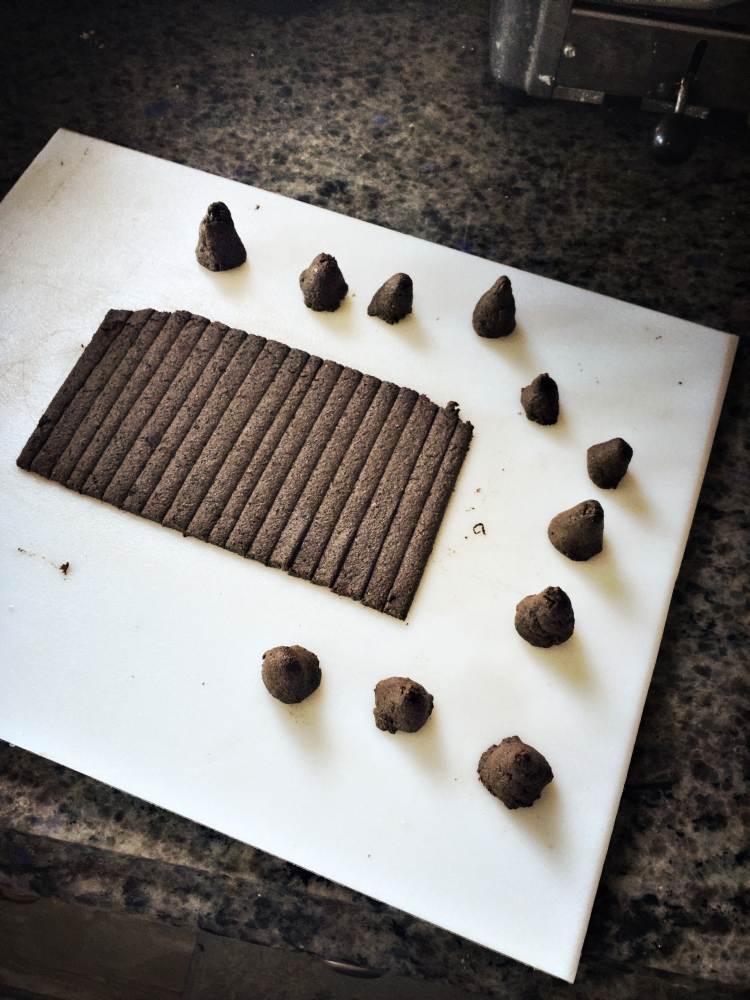
cut and left to dry
I use a chinese-style cleaver to press (but not cut and separate) the rolled-out sheet. When it’s dry you can easily break the pieces apart gently. You may need to put parchment paper and a book on top of it to keep it from curling. If it curls, you probably didn’t knead the dough enough.
It will smell wonderful as it dries.

Want some of my incense? If you contact me (contact info is on the left hand side bar) with a surface mail address, I can send you a bit if I have any around. I usually go through it pretty fast but I always need an excuse to make another batch.

(* Hey, the guy was so poor he had to walk by night because he was barefoot. He’d have worked 6″ spikes. After all, if you can walk on water, you can stalk on anything.)
(** A “concrete” is the solid left after a scent has been extracted. Usually concretes are dissolved in oil or alcohol into an essential oil, or a perfume. Concretes retain the texture of the original material, to some degree: a benzoin resin concrete is sticky goo that never comes off anything! It’s pine tar!)
(*** That means that someone has already extracted the best scents and flavors from them, and are selling you the leftovers)

Vanilla? I was expecting strawberry or peppermint.
I’ve tried the other methods, and tend to be lazy, and just macerate my liquids with my dry ingredients, and burn on charcoal disks. You’re damn right though; have a grinder/ tools just for incense or bath goods, do not try to use your culinary tools for both.
And you’re right about ‘kits’ or buying punks for infusing with essential oils – they are indeed sawdust and dung.
Wow! Just reading your post made me feel like I was surrounded by wonderful incense. I am very sensitive to petrochemicals so most of the cheap incense in the world just makes me very sick indeed. Yours sounds wonderful.
Nice zinger!
left0ver1under@#1:
I love that song!!!
Peppermint essential oil is a thing, but I’m not aware of any strawberry scent that’s not artificial. Most fruit scents are artificial, I am not sure why.
bronwyncaveney@#2:
I’ve tried the other methods, and tend to be lazy, and just macerate my liquids with my dry ingredients, and burn on charcoal disks
That’s pretty clever! I never thought of that.
You might want to try the makko dough technique. It works really well and burns great.
I did make the mistake of buying some of the ebay scent kits. The fake scent oils were really wretched. I was looking for a vanilla absolute scent and what they sold me was something that smelled like the cheap candles you get at bed bath and beyond.